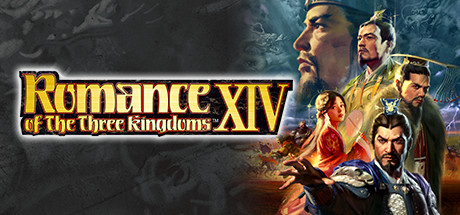Lead your faction in its conquest of Imperial China with a familiar cast of characters and plentiful options to customize each of the many scenarios available to you.
Type: Single-player
Genre: Strategy
Developer: KOEI TECMO
Publisher: KOEI TECMO
Release date: 15 Jan, 2020


Overview
Most of my time in Koei Tecmo’s Three Kingdoms setting has been spent in the ridiculously over-the-top, action-packed Dynasty Warriors series. I’d never had the opportunity to give the somewhat more realistic and significantly more strategic Romance a try, so when I’d heard that XIV was going to have an English translation shortly after its release, I jumped at the chance. Although I’ve heard some long-time fans of the series complain that some aspects have been streamlined, I found Romance of the Three Kingdoms to be an excellent strategy title that brought with it the benefit of revisiting the characters that I’d grown fond of in Dynasty Warriors from a new perspective.
Every Man For Himself
Romance of the Three Kingdoms XIV is set during a particularly chaotic period in Imperial China. As is the norm for Koei Tecmo’s games in the series, its earliest start is the Yellow Turban Rebellion, though there are many other scenarios that offer varied factions, officers, and complications. I opted to play in this era as Sun Jian for my first game, a governor who starts out as an underdog but with plenty of opportunities available to him to turn that around. The Yellow Turban army’s numbers are overwhelming, but Sun Jian’s forces have a handful of very talented officers that are more than a match for the subpar talent found in the Yellow Turban, and there are plenty of neutral cities around for expanding and solidifying his power base.
There are plenty of options for tailoring these scenarios to your liking as well. Although officers have a predetermined age that they are born, mature, and die at, you can extend their lives or make them immortal altogether. There’s even a non-historical scenario that defaults to having all of the officers from the different generations active at the same time, and although I haven’t played it yet, I can only imagine that it’s pure, unadulterated, glorious chaos. This and several other options make for an experience that’s different every time and significantly improving replay value.
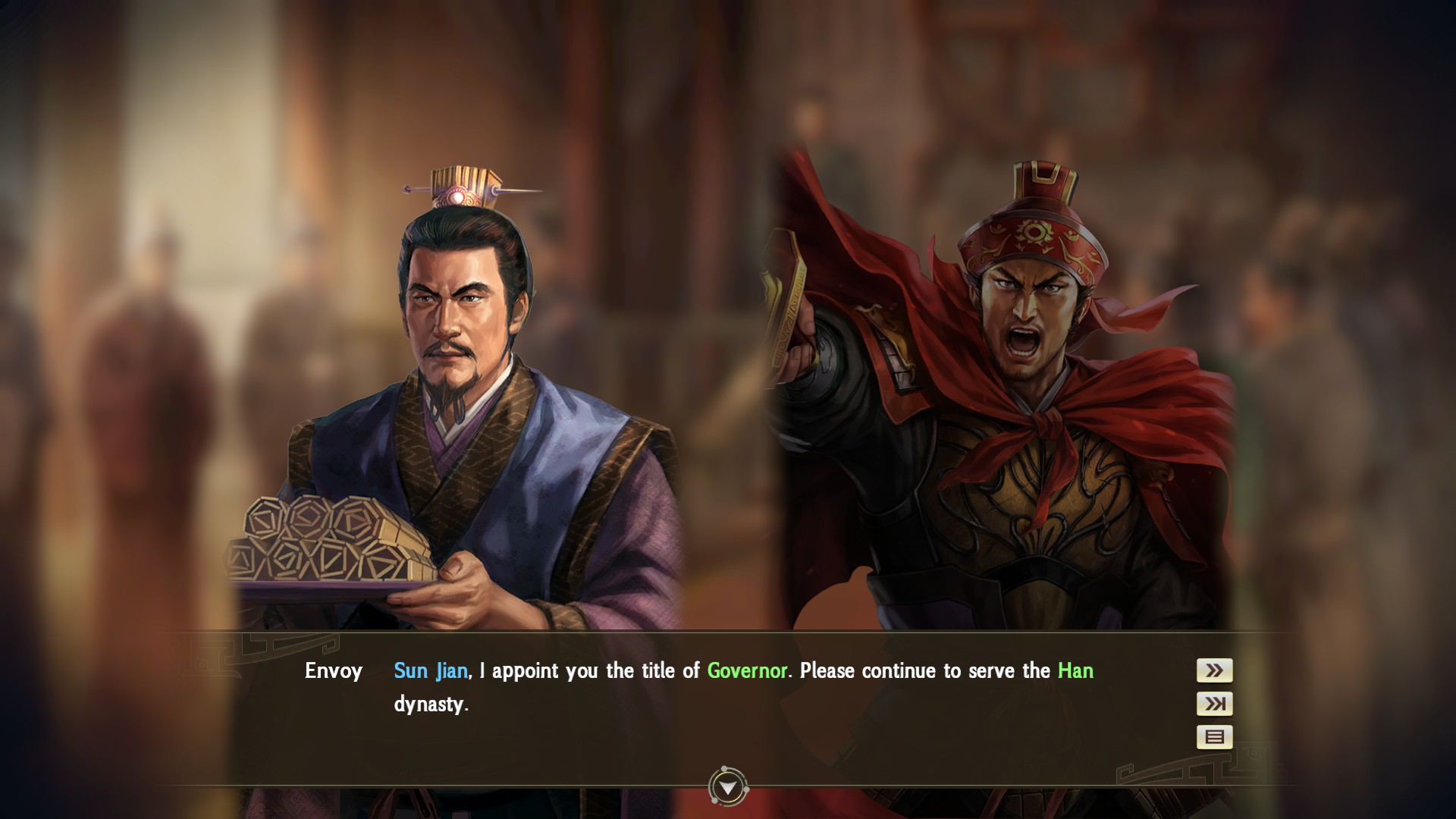
How Many Governors Is Too Many?
Factions are beyond plentiful and every scenario has a number of them available, complete with their own pros and cons. It’s important to note that they aren’t on even footing either, some are far more wealthy, have a much larger army, or have some other distinct advantage that makes them superior to the others around them. Sun Jian, for example, has a strong position for expanding and talented officers, but he has only one city and the number of troops that he has available to him is downright pitiful compared to the hostile Yellow Turban army that he shares a border with. I spent the early game anxious about their advances as I built arrow towers and other traps to hinder them and supplement my small armies. Fortunately, the Yellow Turbans could never fully focus on my realm due to the wars that they were fighting on other fronts with the factions that I had an alliance with. Eventually, my faction has grown enough through the conquest and development of the neutral territories nearby that I was able to push back and claim plenty of their territory for myself as the war ended in our victory over them. As they fell, my allies and I began turning our ambitions toward one another and plotting…
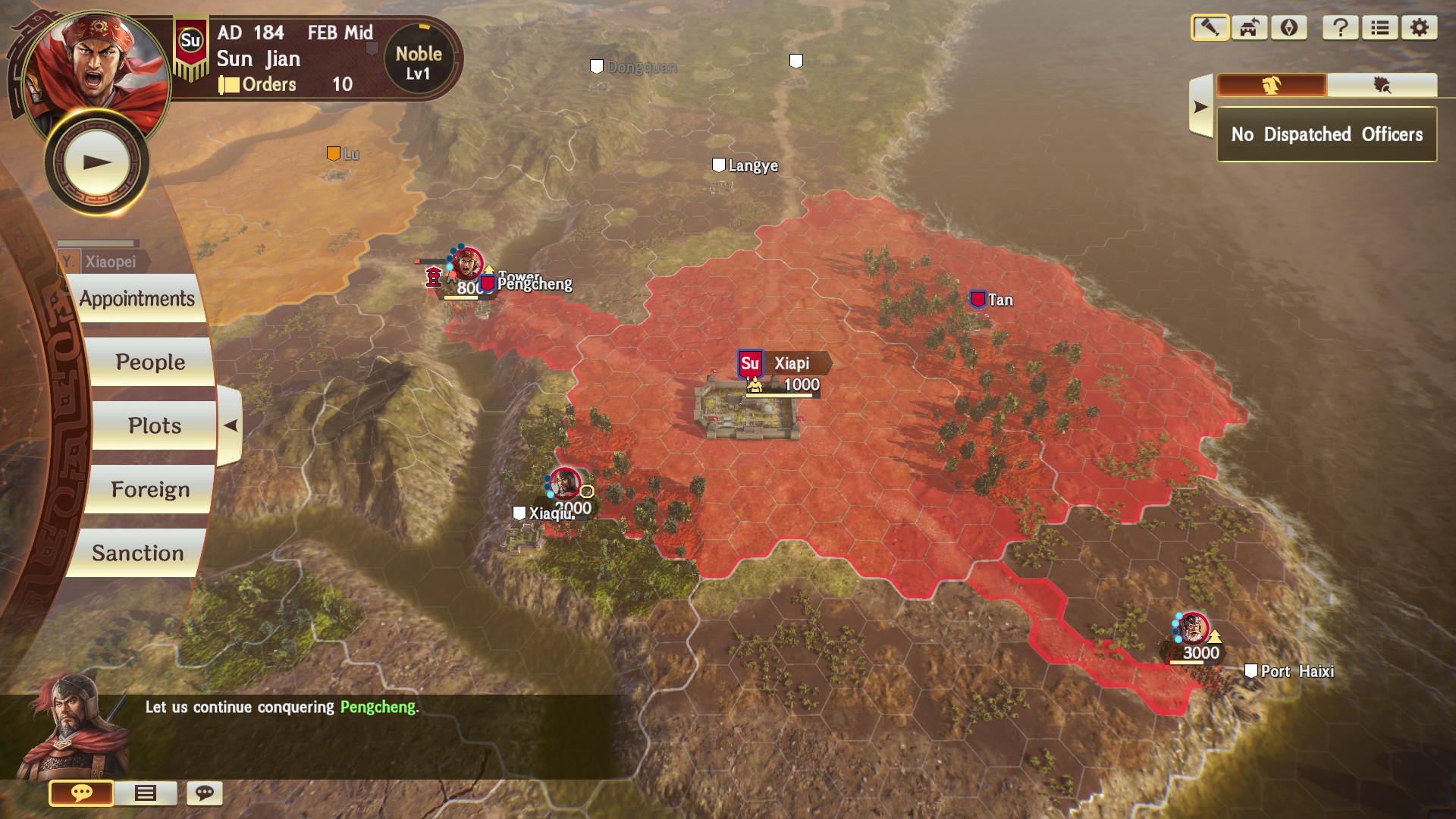
Stories like these are what you can expect from Romance of the Three Kingdoms XIV and the vast selection of scenarios and factions provide plenty of angles to play from. I’m looking forward to playing as another faction and creating a new tale, maybe I’ll try the Yellow Turbans next to see if I can pull off the opposite if the mood doesn’t strike me to play a different scenario altogether.
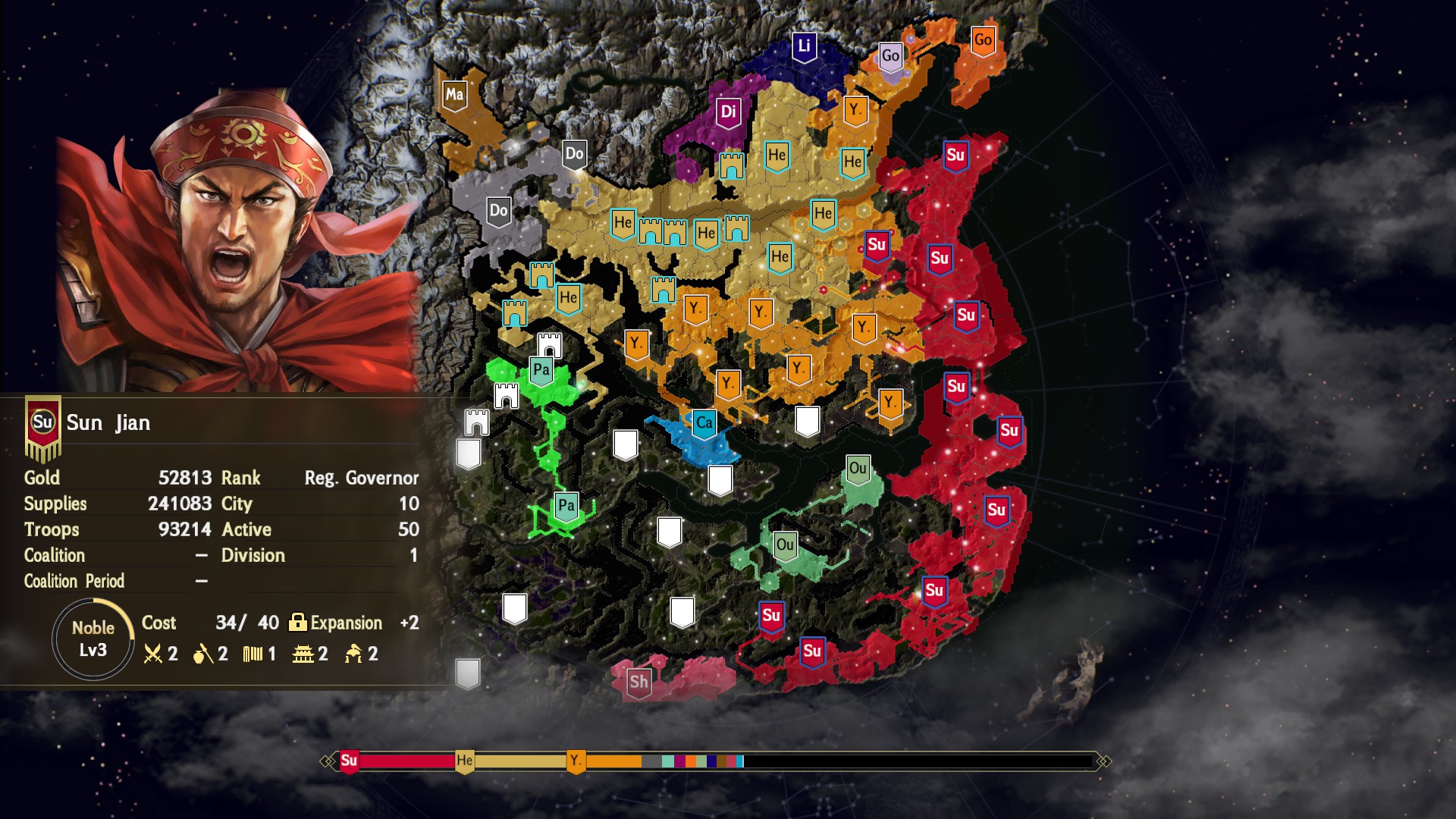
A Million Faces and Not One You Can Trust
The most valuable asset that you hold is your council of officers. Each is a unique entity composed of stats, tactics, formations, and traits, and each of them is ready to turn their back on you at a moment’s notice if they aren’t consistently shown respect and gratitude. Stats are dividing into leadership, strength, intelligence, politics, and charisma. Each has its own uses and makes your officer better or worse at certain tasks that you assign to them. The legendary Lu Bu, for example, has the highest strength on the roster making him fantastic at duels and pairing that with a respectable leadership means that he has a talent for military-focused objectives. On the other hand, a quick glance at his other stats will make you want to keep him as far away from most domestic assignments, diplomacy, and plotting as possible.
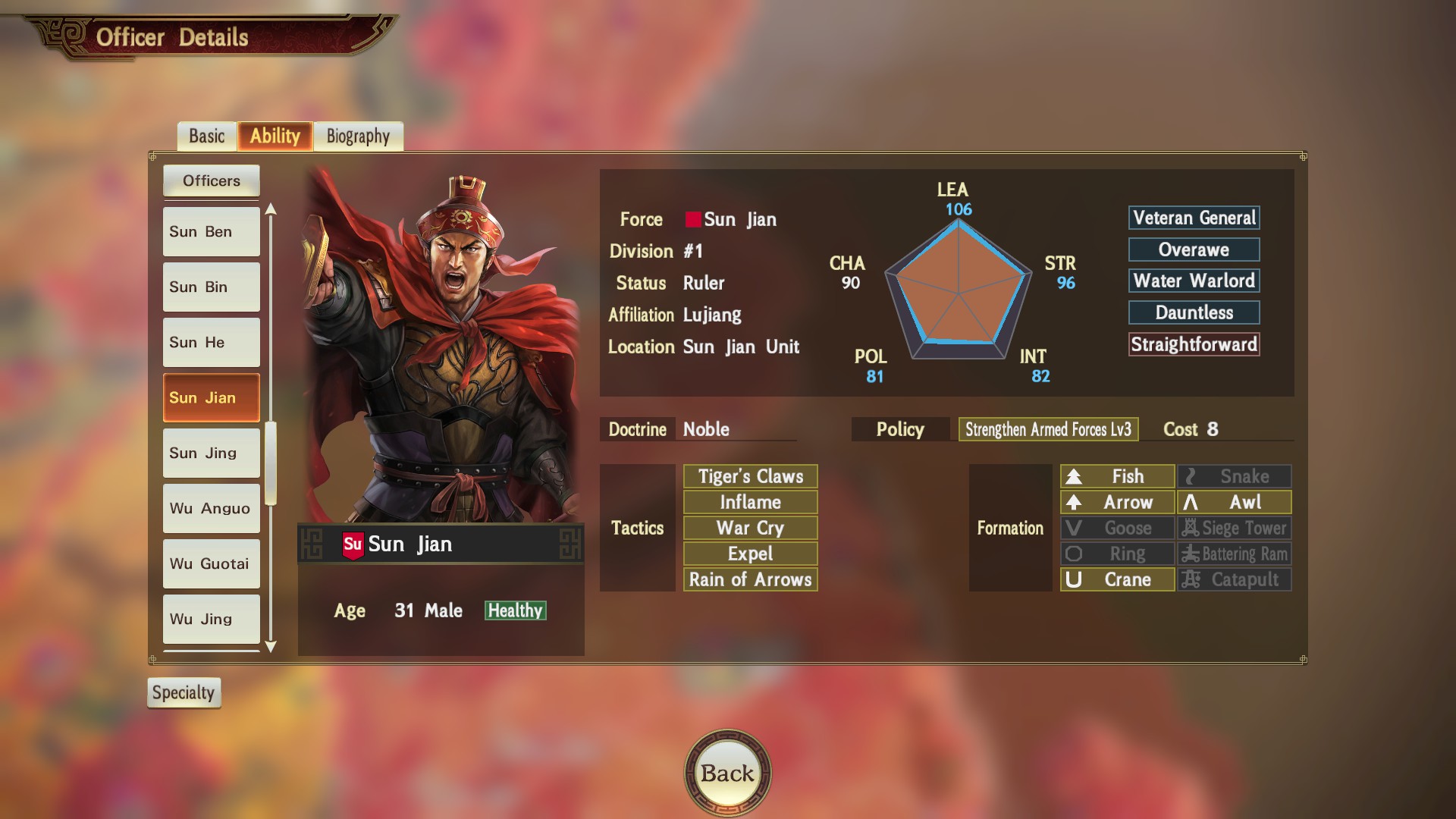
Officers’ tactics, formations, and traits are more of a grab bag. Tactics are special abilities that have a chance of triggering during combat and may deal significant and immediate damage, confuse foes, or even offer a boost to nearby allies, among other benefits. Some of these are particularly powerful while others are less so, but you’ll always be happy to see them activate. Formations are ways that you specialize an officer’s unit upon assigning them their troops. These include fish (balance assault and defense), goose (ranged capabilities), awl (incredible speed but weak combat), battering ram (impressive siege damage), and so on, and the more formations an officer has the more versatility they can offer when you’re putting together your forces for a campaign. Finally, traits are passive abilities that further strengthen or weaken an officer’s capabilities. These include abilities like improved unit stats when fighting in mountains, being immune to confusion or restraint, or being unable to resist the urge to charge headlong into battle with a nearby enemy unit even though they’ve been given other orders.
Another customization option available to those who jump into Romance of the Three Kingdoms XIV is character creation. There are a large number of portraits available and every element of the officers is customizable without restriction. If you want to make a character that has every stat maxed out and the most powerful abilities in the game, you can do that. If you want to take it a step further, you could them the leader of a new faction in the next scenario that you play and have them accompanied by a cast of custom characters that are of equal talent. Alternatively, if you want an extreme challenge, you could do the opposite and attempt to conquer China with a ragtag bunch of incompetents.
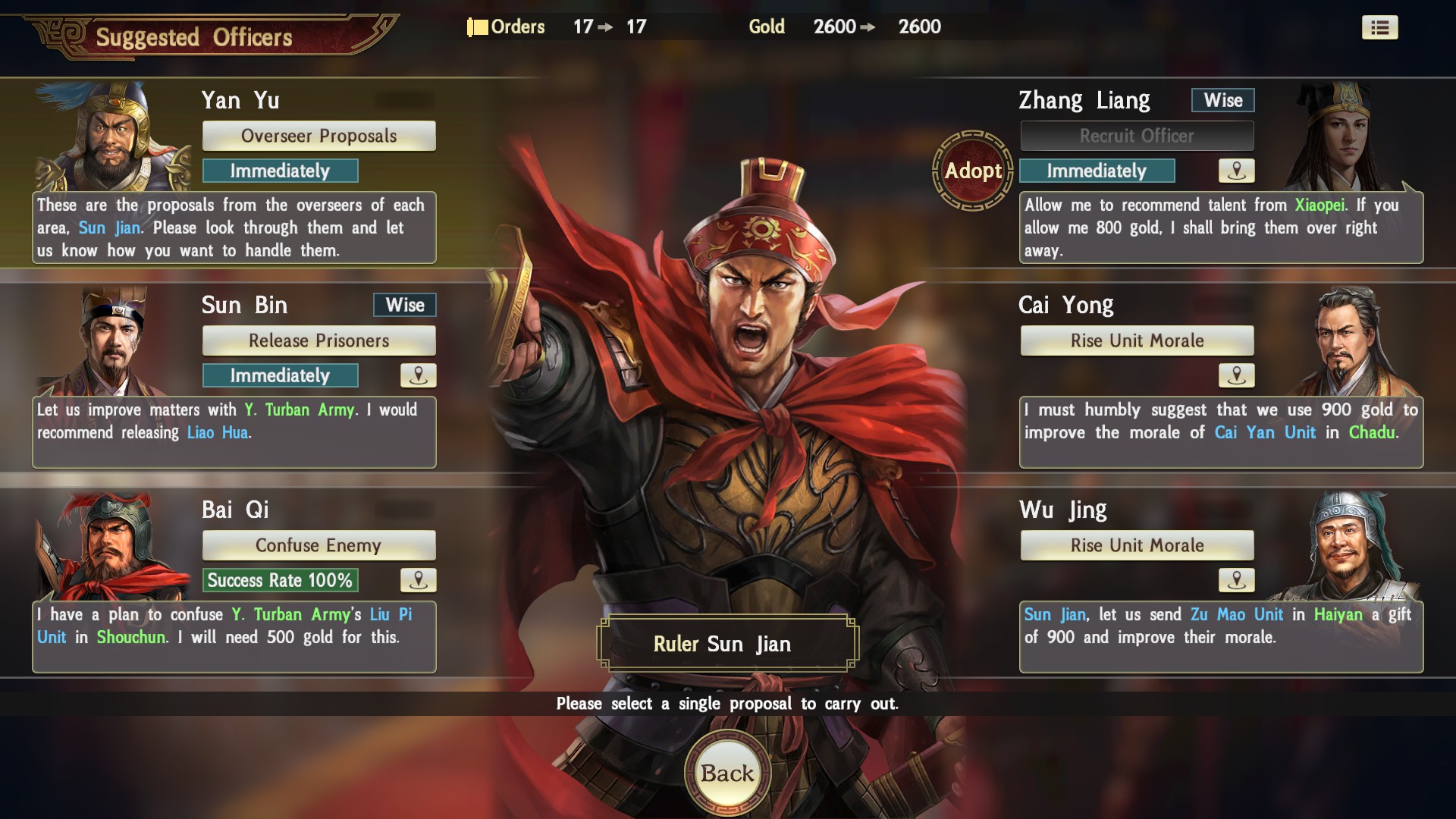
Conquest and Development
Your conquest of China will most likely begin with baby steps unless you’re kicking the scenario off with an already well-established faction. Every province has a city that serves as its capital and each of them is surrounded by several cores, or villages. Each hex within the areas around the core must be conquered individually to become a part of your territory and you’ll want to do this as soon as possible as the province’s troop, gold, and supply production depends heavily on it. This can be done at the army level with officers moving about and conquering these with hexes with roving bands of troops or it can be done by officers placed in overseer roles at the core who will passively expand your territory in the area depending on their efficiency in the role. The best option may be to combine both approaches if you’re trying to establish your hold on the land quickly.
Officers themselves double as commanders of your armies and as overseers, leading armies that take cities and fight battles initially and then applying their talents to develop it. Troops, gold, and supplies are integral to your success and you’ll need efficient territories to support your massive war efforts, making this development every bit as important as the sound tactics that you’ll employ when you directly face your enemies.
Combat itself is fairly straightforward but there are several ways to secure an advantage. A superior troop count and talented officers are the two most obvious ones, though cutting off an enemy army’s supply lines, luring them into a trapped area, or pulling off a devious plot to hinder them are all excellent strategies that can turn the tide in your favor. It’s always important to understand both your enemy’s strengths and weaknesses and your own so that you may plan accordingly.
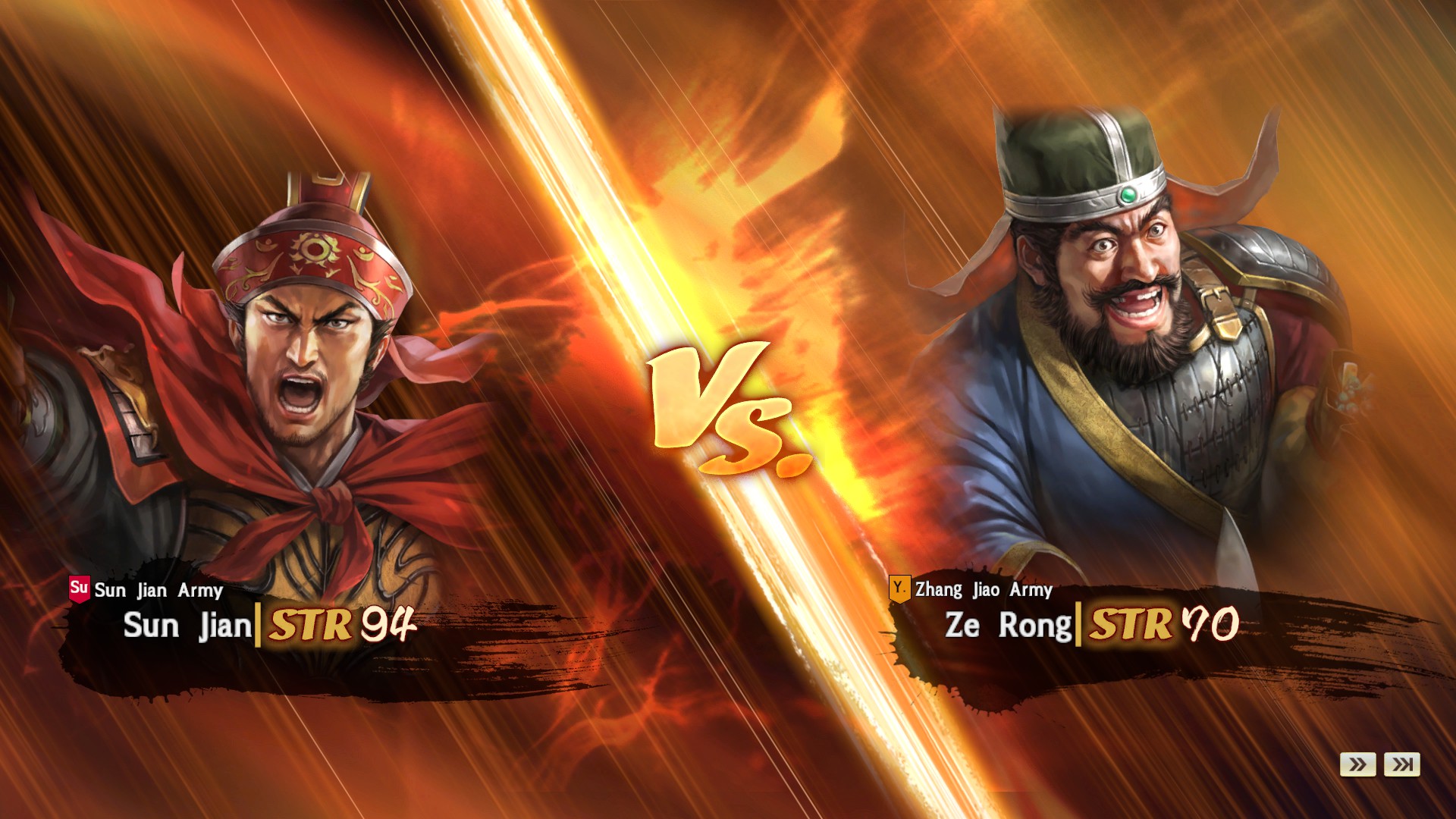
Verdict
Romance of the Three Kingdoms XIV is a fantastic strategy title that I’m looking forward to playing more of. As with any solid entry to the genre, there’s plenty of replay value here and enough depth to keep its players coming back for more. You won’t find the depth of territory development that you do in Civilization, the complex tactical elements of Total War, or the deep character development and roleplaying opportunities of Crusader Kings 2, but you will find a nice middle ground that touches on all of these elements and maintains a deep and unique experience of its own.

